 Signin with Google
Signin with Google Signin with Facebook
Signin with Facebook About Iran
About IranTop Things to Do in Kashan

Kashan, the house of scented rose water is located in Isfahan province and is one of the most attractive historical cities in Iran. The geographical location of Kashan has made this city the usual first stop for tourists after Tehran.
Beneath the still, quiet surface of this desert city, and behind the warm mud-brick walls, there are hundreds of years of history hiding. Through each alley, you can pursue the signs of history and culture.
One of the oldest residences in Iran, Tape Sialk (Sialk Hill) remained from Elamite civilization, more than 8000 years old, is located suburb of this city. The eighteenth-century magnificent historic houses, reflect Kashan as a wealthy city on the ancient silk road. The texture of this city architecture and the stunning nature of the Maranjab Desert in the nearest vicinity are some parts of the Kashan's sights.
If you have a short time to visit this city, it is best to know the best activities and experiences which are listed below to help you get the most out of your stay in this beautiful desert civilization.
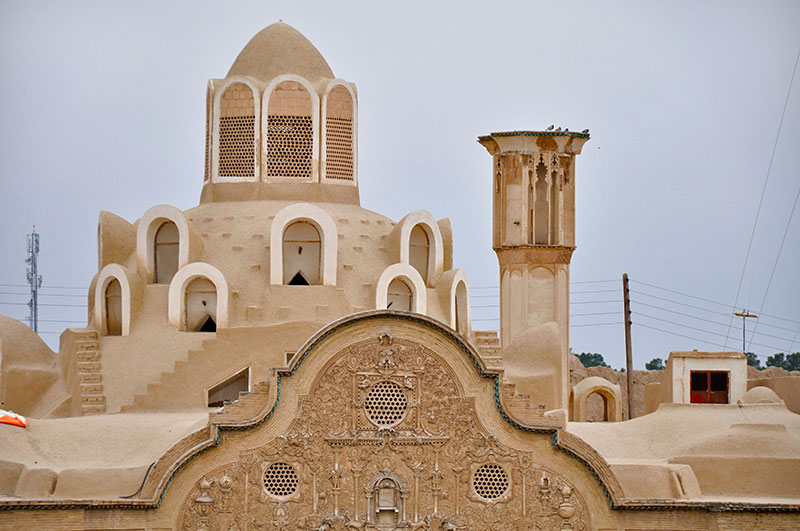
1-Kashan's Traditional Houses
In the 19th and 18th centuries, Kashan was a vacation region and commercial core for wealthy noblemen and merchants. During this time many lavish and large houses were built within the city according to the Iranian architecture, which has become the legacy of Kashan. Therefore, over the years, many of these properties were rebuilt and have been turned into public museums.
The inner spaces of these houses had been devised and utilized for specific purposes. It was common in traditional Iranian architecture to have "andaruni", internal space and "biruni", exterior area, as two main parts. At the entrances of all these houses(biruni), it's not possible to immediately see the inner part of the house(andaruni). Due to the principles of Iranian architecture, all the windows of the house are facing the inner courtyard, and there is no window facing the streets. The elaborate and detailed decoration of these houses, beautiful plaster plans, tile and wall paintings are other charms of Kashan's historic homes.

You can see these beautiful features in Abbasi House, Tabatabaei House, Borujerdi House, and Ameri-ha House.
2- Kashan's Rosewater Festival
Every year, in the second half of May, the Rose and Rosewater Festival will be held in Kashan and the surrounding villages. During that, a lot of Iranian and foreign tourists come to Kashan to observe the distillation and taste the scented rosewater calls as Golab in Farsi. In this month, rose perfume spread everywhere, you can go to Qamsar, Niasar, Joshqan Qali, and Barzok to see Damascus Rose fields and the traditional preparation of rose water.

Rosewater is the most famous herbal extract of Kashan, which also plays an essential role in Persian cuisine. However, in Kashan, different types of herbal flavoured drinks are produced which have many pleasant fragrances besides their healthy properties.
3-Visit Hammm-e Sultan Mir Ahmad
Built-in the 16th century and located in the central historic part of Kashan, this traditional bathhouse is a perfect ancient spa. It has sophisticated architecture, beautiful decoration and deep attention to detail. All of these properties make this bathhouse one of the most spectacular places in Kashan. Visit the interior of the bathhouse and the beautiful paintings and turquoise tiles of the ceiling and walls. Then, don't forget to go to the bathhouse's rooftop and enjoy the uncountable small domes that illuminate the bathhouse with coloured glasses. Imagine how dreamy the sunset or sunrise can be over the roof of the bathhouse. Plan so that you can photograph and enjoy the cityscape that has become golden at sunrise or sunset.
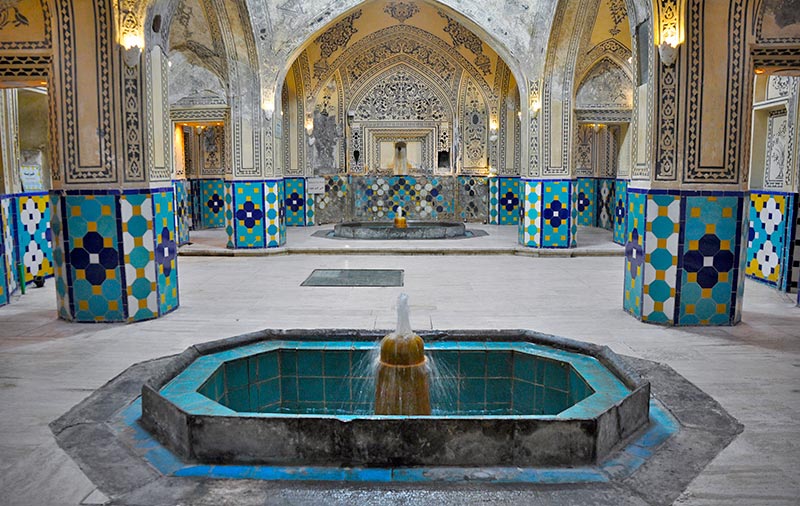
4- Visit Nushabad Underground City
Located eight kilometres north of Kashan, one of the tourist's wonders of Kashan is the underground city of Noushabad in Oee complex. The town was formed due to its cooling and crystal water. The town belongs to the Sassanid era and before Islam. The complexity of the ancient engineering of this project is astonishing. The complex tunnels worked as an emergency shelter are a masterpiece of Sasanian architecture.
5- Experience harvesting Saffron in Kashan
Kashan is one of the regions of Iran that has suitable conditions for saffron cultivation along with Iran's Khorasan province which has an excellent reputation in producing the world's saffron. So, there are more than 40 hectares of saffron fields in the village of Alavi in Kashan, which give the region an unbelievable view with its pretty purple flowers every November.

6- Visit Bagh-e-Fin (Fin Garden)
The Fin Garden historically is one of the most important places in Isfahan province. This Persian Garden was built during the Safavid period in the 16th century. The plan of this garden elaborates pavilion, which is a perfect example of an Iranian garden. Fin Garden is very famous because of the historical tragedy in which it happened. The Fin bathhouse in the garden was the venue of the murder Amir Kabir, chief minister of Naser al-Din Shah Qajar.

7-Visit Agha Bozorg Mosque & Madrasah
This beautiful mosque has a traditional design that has blended Islamic and Iranian architecture gracefully. Massive wind towers (Badgir), gorgeously tiled minarets, a large courtyard decorated with ablutions pool, all made this mosque a masterpiece from the 18th century. Agha Bozorg Mosque is located in the centre of the city.
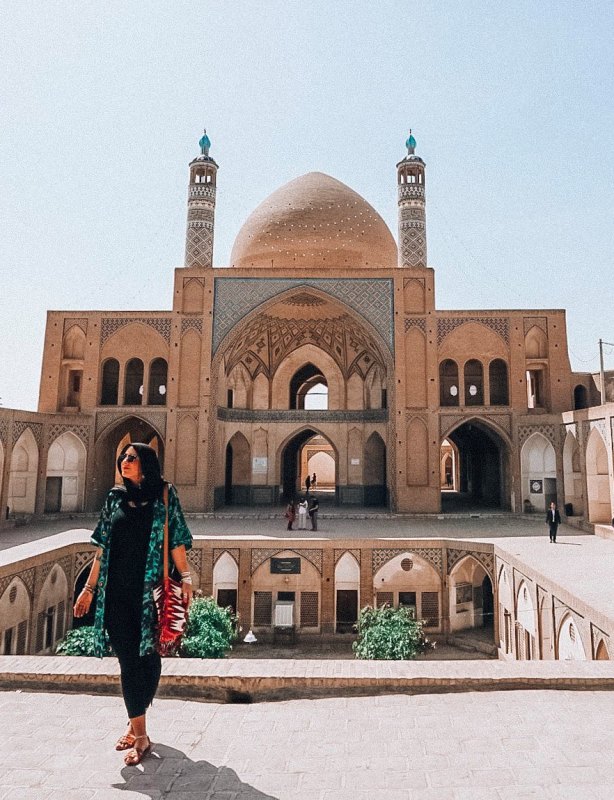
8-wandering through the old town and bazaar
While Kashan has many historical attractions and sights, wandering in the city itself can be very attractive. Seeing people's daily lives and traditional still-life industries and small alleys that one can easily get lost in them can make your day.
Make sure to visit the Kashan bazaar, which is a small but spectacular example of the Iranian bazaar. Timche Amin-alduleh in Kashan bazaar which is a caravanserai with a beautiful dome is the most touristic hub where you can have a cup of well-brewed tea by Mammad Agha. The best time to walk the streets and bazaar is in the afternoon when the sun starts to set down, and the old town is in golden hours.
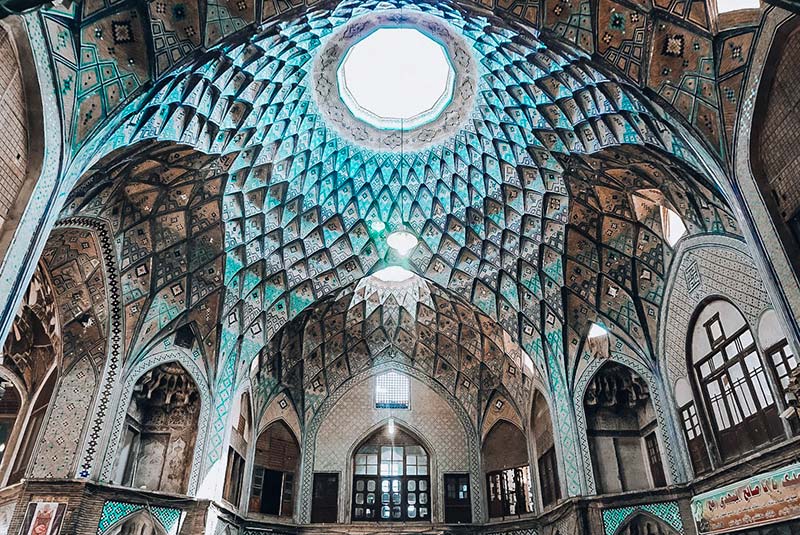
9- Desert trekking in Maranjab
Kashan is a desert city, and very close to the beautiful Maranjab Desert. The desert is linked to the National Desert Park and Salt Lake. With its magnificent dunes, seas sand, spectacular nights, and easy access, Maranjab desert gives you a beautiful experience in nature. Also, one of the sightseeing of Maranjab desert is the Shah Abbasi Caravanserai, a historical resting place for passengers crossing the Silk Road.
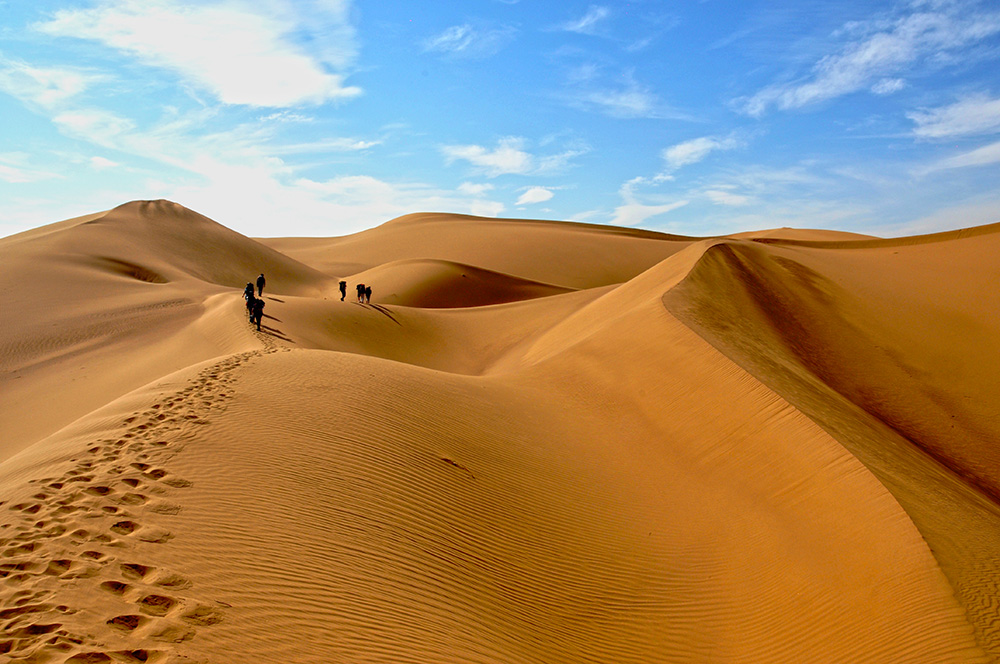
10- Carpet weaving workshops in Kashan
Carpet-weaving is one of the most beautiful Iranian fine arts and has a distinctive style in each region. Carpet weaving in Kashan is an expression of Iranian carpet and is traditionally done in many workshops. The "traditional skills of carpet weaving" in Kashan was inscribed to the UNESCO Intangible Cultural Heritage Lists in 2010. Visit carpet weaving workshops and know the methods and their motifs, weaving tools and techniques of handmade rugs.

11- Experience Ashura day and Ta'zieh theatre in Nushabad
If you are lucky enough to be in Iran on Ashura Day, do not miss the experience of attending the event. Nushabad is one of the fascinating places to host you in Iran's greatest religious ceremony. The traditions of this event from the Safavid era are still fully celebrated on Ashura. The event, which includes performing Ta'ziyeh, distributing free "Nazri" food among people attracts many people each year.
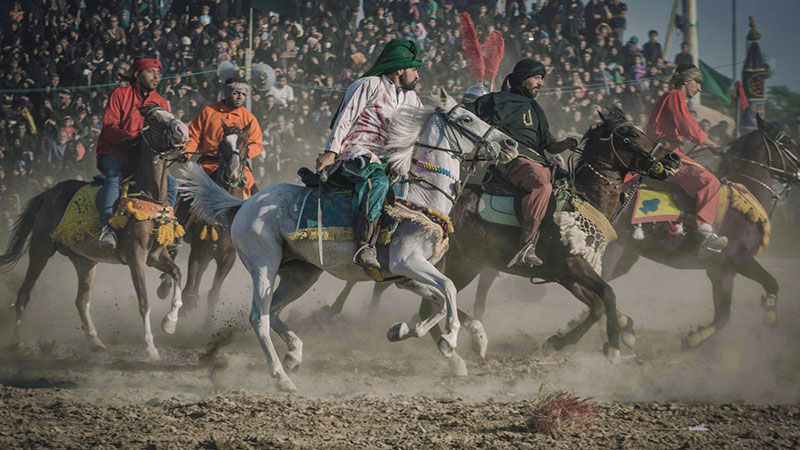
12-Visit Kashan's villages at the foot of mountains
Kashan is a desert city with hot summers. People usually seek refuge in the "Yeylaq" s which means summer quarter of higher altitudes. Beautiful villages around Kashan with lush fruit gardens and rural architecture hosts many people and tourists in hot seasons. You can have a day tour in Niasar, Barzok or other villages and take the vantage of mountain weather, cosy accommodations and orchards there.
Kamoo and Chogan: These two small towns located southwest of Kashan are described as a paradise in the heart of the desert. In addition to their natural and historical attractions, the presence of Iran's National Observatory attracts tourists to the area.
Niasar: This ancient village, dating back to the Sassanid period, is 20 km from Kashan. Located on the hillside, the town is a destination for many tourists by having many natural attractions and a favourable summer climate.
Barzok: This beautiful village is located on the slopes of the Karkas Mountains, 50 kilometres from Kashan. The village is renowned for extracting rosewater, pastoralism, and you can enjoy its extensive crops.

13- The cultural gravity of Puppet Museum
In the beating heart of Kashan city, within narrow alleyways, a different museum named Poppet Museum owns the oldest collection of Iranian folk puppets and international dolls. It is located in a former house of a Qajar-era poet and cleric. The house is recorded as one of the national heritage sites in Iran. Visiting this museum’s antique and contemporary toys, you will learn about Iranian culture through puppets and dolls. You can participate in the plays, performances, music shows, and folk games being operated in the museum if you thrive on feeling a better Kashan.

By Reyhaneh Jafari / TasteIran




